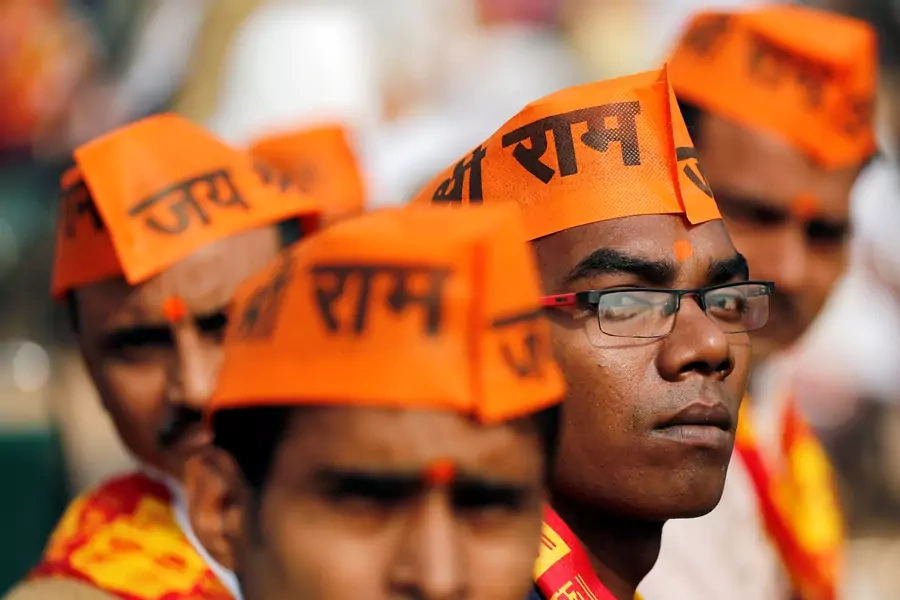Ethnic and Caste Politics, Hindu Nationalism, and the Indian Elections

General elections for India’s lower house of parliament began on April 11 and will last through May 19, with all ballots counted on May 23. This is the world’s largest democratic exercise. I had the chance to ask Dr. Kanchan Chandra, professor of politics at New York University, about ethnic politics, caste, and Hindu nationalism. Our exchange, the fourth of a series of Q & As on the Indian elections, appears below. The first is here, the second here, and the third here.
You have done pioneering work on ethnic and caste politics in India. How do you see caste and ethnicity evolving as a feature of Indian politics?
This election is distinguished by an effort by the Bharatiya Janata Party (BJP) to construct a political majority out of India’s Hindu demographic majority, and an effort by other parties to prevent this from happening.
More on:
Hindus in India are a very diverse lot. They consist of many castes, languages, regions, and tribes. The same goes for members of other religious categories but I will focus on Hindus in this answer.
In principle, this election could go two ways. The mobilization of caste, linguistic, regional, and tribal identities might cut across religious identities and prevent the consolidation of the Hindu majority. Or, the BJP may be able to homogenize caste, linguistic, regional, and tribal identities in service of a larger Hindu majority.
I think the first scenario is more likely.
In November, you wrote an essay for Foreign Affairs that examined “The Triumph of Hindu Majoritarianism” in Indian politics, noting that the shift away from Nehru’s idea of secularism began back in the 1980s. Can you explain for a general reader what a more moderate approach to religion in public life might look like, one that in your words “offers equal respect not only to India’s non-Hindu minorities but also to the many different ways of being Hindu”?
Unlike Catholicism, which has a Church and a Pope, Hinduism is a religion of many traditions, many books, and many religious institutions. There is no single book, church, priest, or institution that defines it.
More on:
A state could offer equal respect to all of these traditions (Hindu as well as non-Hindu) by following a highly differentiated policy toward religion that recognizes all these traditions. Such a state would do away with the notion of majority and minority altogether by recognizing a multiplicity of traditions. It would also be equidistant from, rather than neutral toward, all religious traditions. The version of India as a secular state as laid down in its Constitution approximates the ideal of equidistance but could do more to recognize the diversity within Hinduism.
This kind of state is now unlikely in India. What is happening in India now is a change both in the form of the state and in the form of religion itself. Hinduism itself is undergoing a transformation from a religion of many traditions to a religion that is becoming evangelized and approaching the idea of a single great tradition. And the state is beginning to recognize and institutionalize this homogenized, evangelized form of Hinduism. The politics of Hindu nationalism, coupled with the liberalization of the economy and the creation of a nationwide media, has a lot to do with that.
India’s most populous state, Uttar Pradesh, is the size of a large country, with its 200 million people. You have focused closely on the politics of this state. What will you be watching in the coming weeks?
Uttar Pradesh is the classic case of the politics of caste and ethnicity cross-cutting the politics of religion. The BJP is defending its position in this state by focusing on religious mobilization. The two main opposition parties – the Bahujan Samaj Party (BSP) and the Samajwadi Party (SP) – are attempting to neutralize this trend toward religious mobilization by emphasizing the distinct interests of subordinate caste groups and religious minorities. I will be watching for the number of seats each combination takes away, which could also have a major impact on who forms the government at the center.
What will you be watching most closely at the national level during India’s 2019 general election?
I have been paying close attention to the way in which most political parties have begun to capitalize on the politics of religion. The BJP is trying to mobilize a Hindu majority by activating fear (of terrorism, of Pakistan, of instability). The Congress is trying to mobilize a Hindu majority in a different way, by emphasizing the religiosity of its leaders and their commitment to Hindu values. No matter who wins, this will change the relationship between India’s Hindu majority and the government, and therefore the nature of India as a secular state. I will be watching to see how this plays out.
My book about India’s rise on the world stage, Our Time Has Come: How India Is Making Its Place in the World, was published by Oxford University Press in January 2018. Follow me on Twitter: @AyresAlyssa. Or like me on Facebook (fb.me/ayresalyssa) or Instagram (instagr.am/ayresalyssa).
 Online Store
Online Store